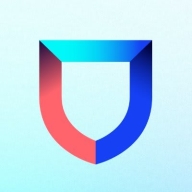


CoreOS Clair and Lacework FortiCNAPP compete in the security and compliance domain, with Lacework FortiCNAPP seen as having the upper hand due to its expansive features.
Features: CoreOS Clair offers container vulnerability scanning, integrates with CI/CD pipelines, and provides flexibility through its open-source nature. Lacework FortiCNAPP provides detailed threat detection, compliance automation, and comprehensive cloud security that benefits enterprise applications.
Ease of Deployment and Customer Service: CoreOS Clair features straightforward deployment and exceptional support, improving the experience for those knowledgeable in container technologies. Lacework FortiCNAPP needs more setup but gains from strong assistance and offers holistic cloud monitoring, easing cloud management.
Pricing and ROI: CoreOS Clair has a lower setup cost, favorable ROI, and community-driven support. Lacework FortiCNAPP, though more costly, provides long-term savings by lowering security risks, ensuring a strong ROI with advanced security features.



SentinelOne Singularity Cloud Security protects cloud workloads, offering advanced threat detection and automated response. It integrates seamlessly with cloud environments and secures containerized applications and virtual machines against vulnerabilities.
SentinelOne Singularity Cloud Security is renowned for its efficiency in mitigating threats in real-time. The platform integrates effortlessly with existing cloud environments, ensuring robust cloud security management with minimal manual intervention. Securing containerized applications and virtual machines, it excels in threat intelligence and endpoint protection. However, improvements are needed in performance during high workload periods, and more integrations with third-party tools and better documentation would be beneficial. Users often find the installation process complex, support response times slow, and the dashboard's navigation unintuitive.
What are the key features of SentinelOne Singularity Cloud Security?In specific industries, SentinelOne Singularity Cloud Security is implemented to safeguard critical data and infrastructure. Organizations in finance, healthcare, and technology depend on its real-time threat detection and automated response to protect sensitive information. Its ability to secure containerized applications and virtual machines is particularly valuable in dynamic environments where rapid scaling is necessary.
Clair is an open source project for the static analysis of vulnerabilities in appc and docker containers.
Vulnerability data is continuously imported from a known set of sources and correlated with the indexed contents of container images in order to produce lists of vulnerabilities that threaten a container. When vulnerability data changes upstream, the previous state and new state of the vulnerability along with the images they affect can be sent via webhook to a configured endpoint. All major components can be customized programmatically at compile-time without forking the project.
Lacework FortiCNAPP provides robust cloud security, combining vulnerability management and multi-cloud insight with user-friendly controls, machine learning detection, and compliance support.
Lacework FortiCNAPP specializes in cloud security by merging machine learning anomaly detection with agent-based vulnerability management to offer detailed alerts and compliance reports. Its comprehensive approach allows continuous monitoring across AWS and Kubernetes, providing insights from an attacker's perspective. The platform offers automation and seamless Slack integration, facilitating collaborative and efficient cloud security management. Users value its ability to handle multi-cloud environments and scan IAC scripts, configurations, and compute nodes across AWS and GCP.
What are the key features?Organizations across sectors leverage Lacework FortiCNAPP for cloud security, focusing on compliance, security posture, and vulnerability management. It is widely used for monitoring AWS and Kubernetes environments, scanning IAC scripts, configurations, and securing compute nodes. It supports multi-cloud security posture management and log ingestion, enabling companies to maintain strong cloud infrastructures without dedicated security layers.
We monitor all Container Security reviews to prevent fraudulent reviews and keep review quality high. We do not post reviews by company employees or direct competitors. We validate each review for authenticity via cross-reference with LinkedIn, and personal follow-up with the reviewer when necessary.